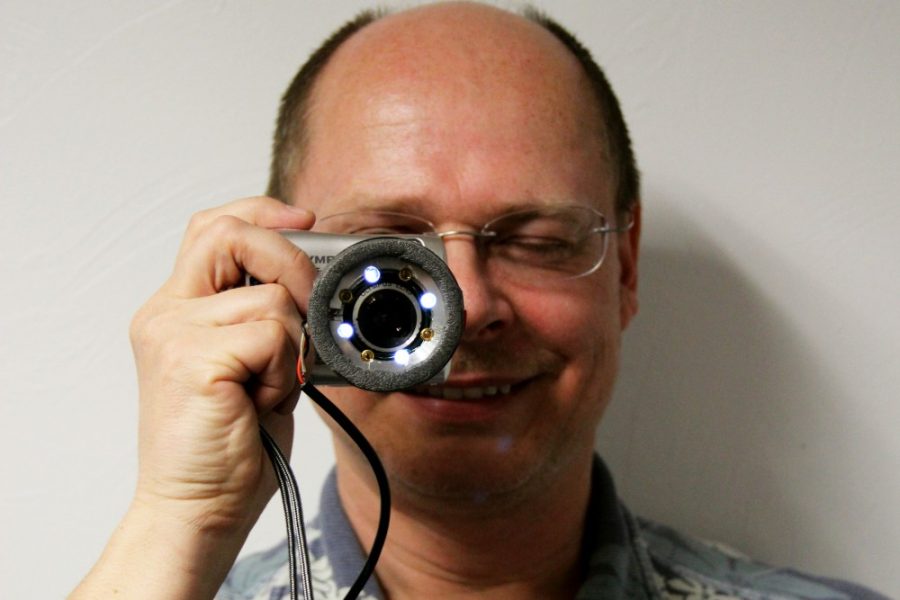Nearly 10 years ago, Wolfgang Fink spent $85 on a digital camera. Now, the outdated point-and-shoot is doing things the cameras on the Mars rovers cannot.
It’s zooming in — way in.
After making a few simple modifications, Fink, who is an associate professor in the department of electrical and computer engineering and the Edward and Maria Keonjian Endowed Chair in Microelectronics, adjusted the camera to magnify objects with microscopic resolution.
The modified camera, called an “astrobiological imager,” was featured in a research paper recently published in the journal Astrobiology. The device could prove helpful in the search for life on other planets such as Mars, Fink said.
“We created a special adapter, which is a lens that is able to shorten the focal distance of the camera such that we can take extremely close-up images,” Fink said.
The 5-megapixel camera can resolve images at one micron per pixel, Fink added.
The ability of the camera to photograph landscapes and lichens would be useful in planetary exploration because one camera could do the work of several, Fink said.
A rover equipped with the multi-tasking imager could hunt for microorganisms, not only in the soil, but also inside rocks, he added.
“Looking for bacteria on a planet is looking for the needle in the haystack,” he said. “Therefore, you need to look around you and say, ‘Where’s the rock that’s most likely to harbor life?’”
Once a target site is identified, the camera could zoom in and the rover could move in for a closer look, eventually analyzing the rock at the microscopic level.
“You get the context from seeing the larger picture, and then you can focus down to the specific details,” said Victor Baker, regents’ professor in the department of hydrology and water resources and joint professor in the department of planetary sciences and the department of geosciences.
A small, bowl-shaped attachment on the camera can be used to keep out external light, while infrared and ultraviolet rays illuminate the rock. The light that is reflected back can be analyzed to determine the rock’s composition and look for evidence of microbial life, Fink said.
Although temperature swings and the bombardment of radiation on the surface of Mars make it an unlikely place to facilitate life, there could be microscopic organisms living just beneath the surface of the rocks, said Henry Sun, assistant research professor for the Desert Research Institute in Las Vegas, Nev.
“Mars is a very hostile place,” Sun said. “You can’t expect to find life everywhere.”
While the souped-up point-and-shoot cost roughly $1,000 dollars to create, Fink said it will take substantial funding to upgrade the design to NASA-quality specifications. But in the meantime, he said that he is proud of his multi-tasking imager, which he likens to a decathlete.
“It’s not the world champion in one discipline,” he said, “but it’s good across many disciplines … and we’re excited about it.”









